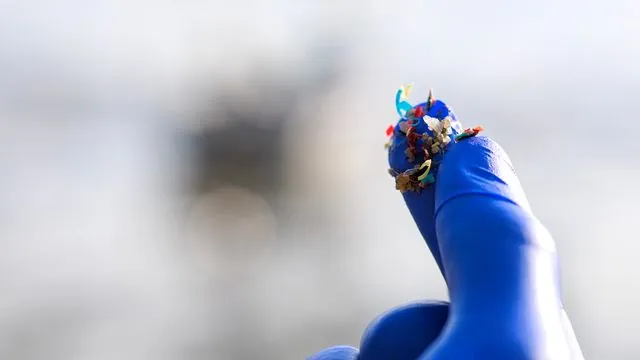
Shocking Discovery: Wastewater Treatment Systems Fail to Eliminate Pathogen-Infested Microplastics!
2024-11-13
Author: Siti
A groundbreaking study from the Norwegian University of Life Sciences reveals a shocking truth about wastewater treatment systems: biofilms forming on microplastics are creating safe havens for harmful pathogens, including notorious bacteria like E. coli and viruses such as norovirus. This alarming discovery could have serious implications for both human health and environmental ecosystems.
The unsettling findings, published in the esteemed journal PLOS One, indicate that even after treatment, wastewater can still carry microplastics laden with dangerous pathogens.
Microplastics: The Unseen Environmental Threat
Microplastics, tiny plastic particles smaller than 5 millimeters, are ubiquitous environmental contaminants, infiltrating every ecosystem from the deepest oceanic trenches to the highest mountain peaks. Originating from the breakdown of plastic waste, these pollutants pose significant risks. Emerging scientific evidence suggests that they can absorb toxic chemicals and heavy metals, facilitating the transfer of these harmful substances through various food chains and ultimately into human diets.
In aquatic environments, microplastics act as miniature rafts, offering surfaces for microorganisms to attach and proliferate. This phenomenon, known as the “plastisphere,” can harbor numerous disease-causing pathogens, making microplastics a significant concern for public health.
The Struggle of Wastewater Treatment Systems
Wastewater treatment plants deploy a mix of physical, biological, and chemical processes designed to remove pathogens along with solids and organic matter. However, due to their minuscule size, microplastics can dodge filtration systems altogether. As a result, treated wastewater is often discharged into natural water bodies, introducing these resilient and contaminated particles into the environment for decades, if not longer.
A worrying array of pathogenic bacteria and viruses—including strains like Klebsiella pneumoniae and adenovirus—have been detected in effluent from treated wastewater. Understanding how microplastic surfaces can contribute to pathogen proliferation is crucial for addressing potential threats to human health and ecosystems alike.
A Deep Dive Into the Study
Researchers investigated the issue by placing three types of plastic—Polypropylene, Polyvinyl Chloride, and High-Density Polyethylene—into both raw and treated wastewater at a facility in Norway, allowing biofilms to develop over periods of 14 and 30 days.
Upon retrieval, they swabbed these biofilms and isolated pathogens using selective media, identifying them through mass spectrometry. Strikingly, the results indicated that plastispheres formed from both types of wastewater contained foodborne pathogens, including E. coli, Listeria monocytogenes, and Salmonella, as well as opportunistic pathogens that can threaten individuals with weakened immune systems.
Moreover, viral pathogens like norovirus and adenovirus were also discovered within these biofilms, suggesting that pathogen survival is significantly enhanced in these protective environments.
Implications for Public Health
The findings are highly concerning. The presence of pathogens thriving in biofilms, even after wastewater treatment processes, suggests that current methods are insufficient in completely removing microplastics and their contaminant load. Despite treatment, significant amounts of microplastics, along with potential pathogens, remained in the treated outflow, raising questions about the safety of reused water resources.
The authors of the study emphasize that innovative management and enhanced treatment technologies are urgently needed to tackle the issue of plastic and pathogen-laden waste. They warn that without intervention, these plastispheres may contribute further to the spread of diseases, complicating environmental health efforts and water reuse initiatives.
Conclusion
This alarming research underscores the necessity of addressing the growing problem of microplastics and their ability to harbor dangerous pathogens. As pollution continues to infiltrate our ecosystems, the fight for cleaner water and healthier environments grows increasingly urgent. The question remains: Can we overhaul our wastewater treatment systems before it's too late?
Stay informed, as there could be more shocking revelations in the battle against plastic pollution and public health crises!





 Brasil (PT)
Brasil (PT)
 Canada (EN)
Canada (EN)
 Chile (ES)
Chile (ES)
 España (ES)
España (ES)
 France (FR)
France (FR)
 Hong Kong (EN)
Hong Kong (EN)
 Italia (IT)
Italia (IT)
 日本 (JA)
日本 (JA)
 Magyarország (HU)
Magyarország (HU)
 Norge (NO)
Norge (NO)
 Polska (PL)
Polska (PL)
 Schweiz (DE)
Schweiz (DE)
 Singapore (EN)
Singapore (EN)
 Sverige (SV)
Sverige (SV)
 Suomi (FI)
Suomi (FI)
 Türkiye (TR)
Türkiye (TR)